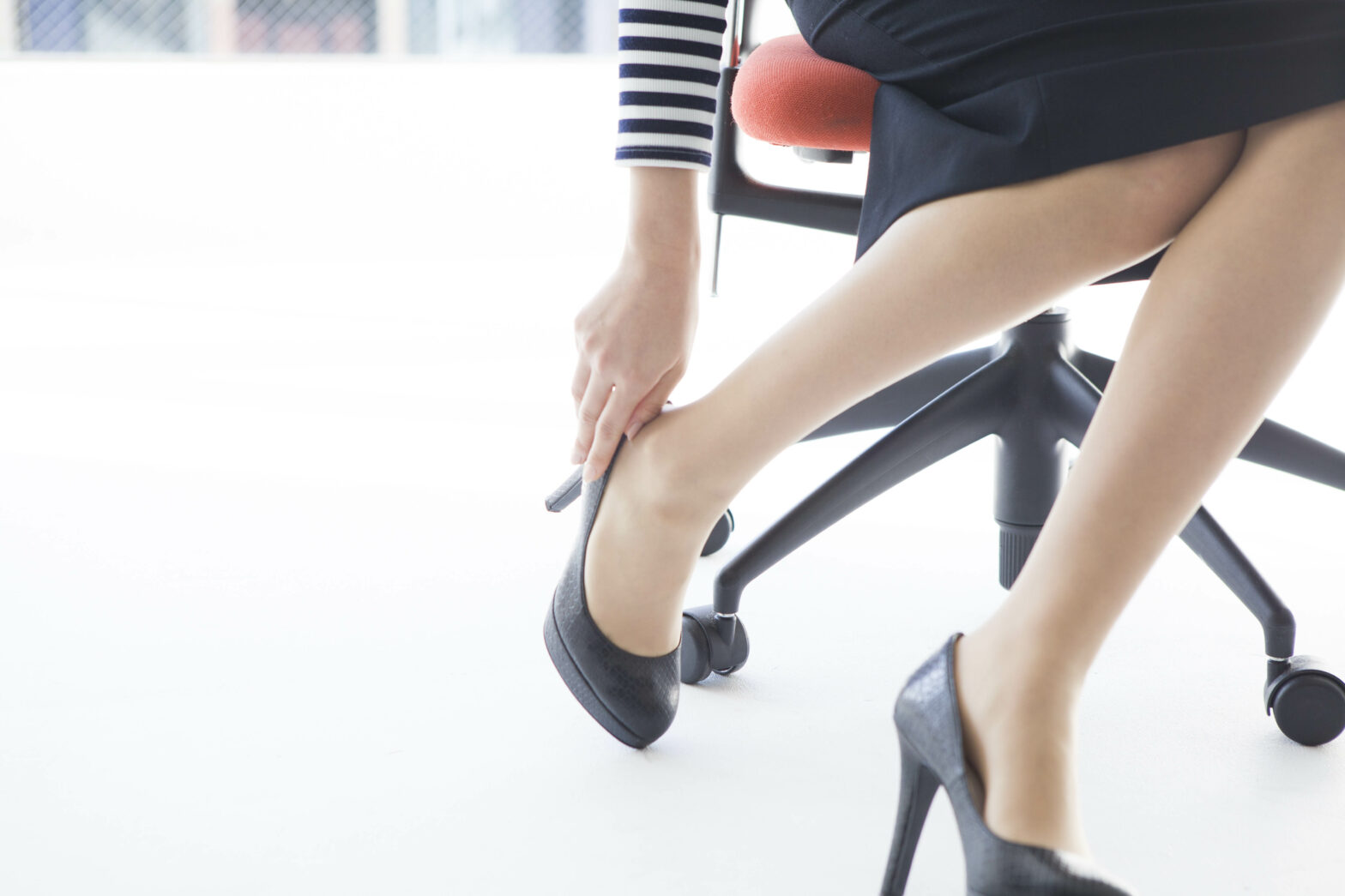The issue of high heels in the workplace has been in the news recently with regards to equality in dress codes and Parliament is hearing evidence to determine if there is a need for clearer guidance regarding footwear when it comes to health and safety legislation.
Danny Clarke, group operations director for ELAS, agrees that health and safety guidelines regarding high heels and the potential long term damage that comes with wearing them on a regular basis might need looking at, particularly when it comes to strain on the upper part of the legs and pressure that is placed on the toes when wearing high heels.
Clarke says that, ultimately, footwear needs to be sensible and suitable for work activities and the working environment. ‘Certain environments such as factories, warehouses or transportation typically require the wearing of closed toe or steel capped shoes. High heels are normally deemed necessary as part of a corporate dress policy but with research highlighting the risks of long-term musculoskeletal damage as a result of wearing them, it may be time for employers to review these strict dress codes.’
Taking into account employers’ duty of care to protect their employees’ health in the workplace, Clarke suggests that they consider reviewing these dress codes and determining whether the requirement to wear high heels is necessary. ‘If employees spend the majority of the day on their feet, are required to carry heavy or awkward loads or walk any kind of distance then we would recommend this be taken into account.’
Evidence suggests that high heels alter the wearers’ stance, physiology and gait. Podiatrist Kathryn Rutter says that the foot is designed to deal with gravity and forces in a specific way. ‘If a heel is worn for long periods of time then the position of the foot changes, leading to foot deformity and joint pain in the feet, back and knees. Often corns and calluses occur. Can it therefore be right to force employees to wear high heels for work?’ she asks.
The case against high heels
The College of Podiatry submitted evidence to the Parliamentary committee and says they ‘…recommend that women should not be forced to wear high heeled shoes in the work place as part of a uniform. We believe that there is a strong body of clinical evidence that significantly indicates the medical and disabling effects of wearing a high heel shoe over a prolonged amount of time.
‘Despite the fact that there is an abundance of medical and scientific evidence, consideration of the effect the shoe has on the health of the individual as part of a dress code has not previously been addressed. We conducted a survey which revealed that women complain of foot pain on average one hour, six minutes and 48 seconds after putting on ill-fitting high heel shoes. A fifth of responders said that their feet began to hurt after just ten minutes’ wear. Given the length of a working day, this would mean working from about 10am until 5pm in pain on a typical 9am-5pm day.’
The Parliamentary Petitions Committee set up a web forum ahead of the evidentiary hearings, which generated 730 comments on the issue. The majority of posters who said they had to wear high heels as part of a workplace dress code work in the retail, hospitality, airline or corporate industries. Within the retail industry luxury department stores, shoe chains and jewellers were those most regularly mentioned.
Roxanna works for a shoe company. She posted saying, ‘My employer requires us to wear high heeled pointy shoes of their choice; we are not allowed to wear alternative flat-heeled shoes that are available within the range. We stand all day for eight hours wearing heels and are not allowed to sit.
‘The stock room is not close to the shop floor and we walk back and forth about 50-60 times a day holding heavy boxes of shoes and boots. We are expected to climb up and down stock room ladders while wearing high heels. None of the male staff within the company are forced to wear heels.’
Chloe, who works at a luxury department store, adds, ‘A minimum of a three-inch heel was required in the nursery furniture department I worked in. We were expected to wear high heels whilst taking trips to the basement to bring up pushchairs and small items of furniture for customers.’
Estate agent Candy says, ‘I was told I must wear heels as its professional. I worked 12-hour days and my job involved walking around a lot, which was particularly problematic in winter. I had to show an applicant a property in the snow and looked ridiculous teetering up the hill trying not to fall on my face while my applicant had appropriate snow shoes on.’
Putting employees at risk?
Clarke says that comments on the forum suggest that employers are not considering the work their employees carry out in their daily duties when requiring them to wear high heels. ‘Is there a reason they are specifying high heels as opposed to flat shoes, particularly in inclement weather? While there is nothing wrong with wanting to maintain a professional image in the workplace, employers should look at whether they are putting employees at risk.’
A comprehensive risk assessment should look at whether there is an impact on an employee from wearing high heels in a particular job, whether an employee has back pain or issues and how they might be affected in the role.
If issues aren’t identified before an employee starts work then it is possible that the employer might contribute to the employee’s back pain. Likewise if an employer requires employees to wear high heels purely for aesthetic reasons then they could be at risk of a discrimination claim.
Clarke continues, ‘It appears likely Parliament may recommend changes in guidance or legislation which could include requirements for health and safety considerations, or be based on equality. We would suggest responsible employers stay one step ahead of any pending changes by updating dress code policies to reflect their commitment to protecting employees’ health.’





